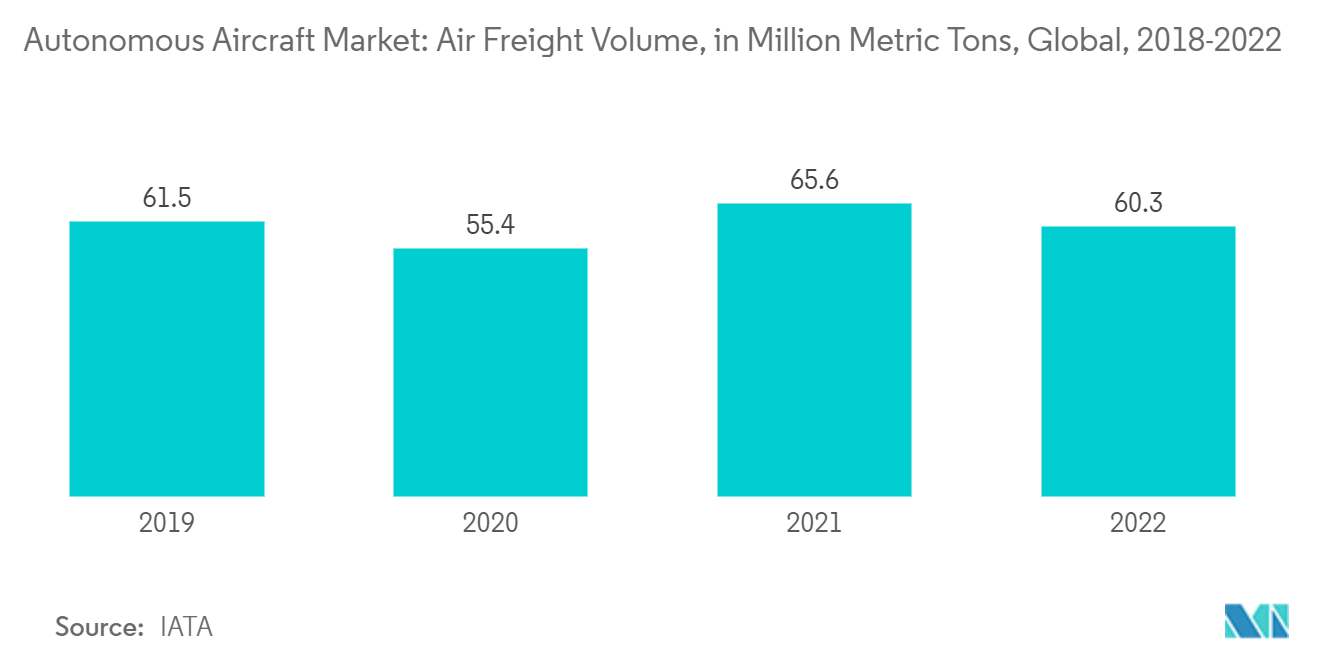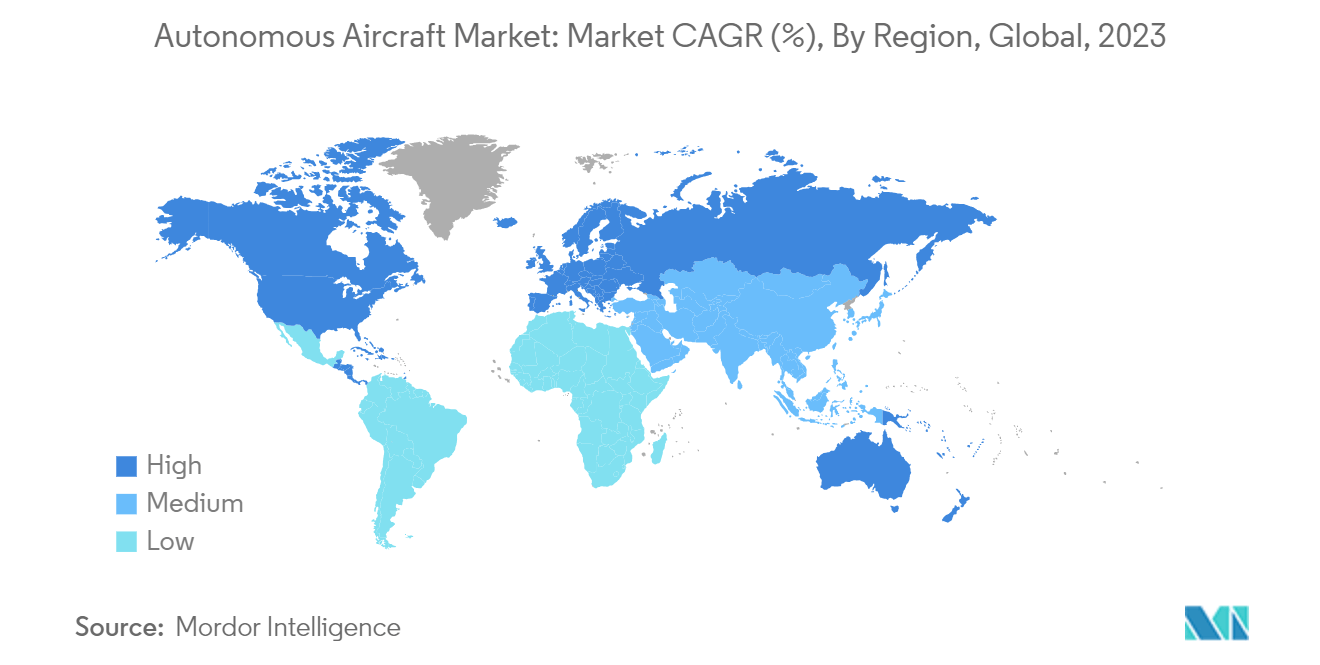Market Trends of Autonomous Aircraft Industry
Autonomous Cargo Aircraft to Witness Rapid Market Share Growth During the Forecast Period
Cargo planes are expected to be the first to adopt this autonomous aircraft technology. In passenger flights, safety and the lives of people are given paramount importance, and thus, the adoption of autonomous aircraft should start after continuous and rigorous testing is done. This is not the case with cargo aircraft, as the level of life risk is zero with the use of autonomous aircraft in cargo planes. The growth in the e-commerce industry is driving the demand for air cargo, which may increase the demand for air cargo pilots in the future.
Most of the developments in the autonomous aircraft market are aimed at bringing autonomous cargo aircraft into commercial use to fill in the gap due to the pilot shortage. For instance, in May 2023, Xwing was awarded a contract by the US Air Force to conduct pilotless cargo trials. As per the terms of the contract, Xwing will coordinate the identification of best use cases for autonomous flight operations with the Air Force and military stakeholders. Xwing will also conduct test flights that include a fusion of flight control systems, auto takeoff/landing, Detect-and-Avoid (DAA) systems, auto braking, auto taxi, and remote operations software to enable autonomous operations on the Cessna 208B platform.

North America is Expected to Continue its Market Share Dominance During the Forecast Period
Currently, the US is increasingly focused on the development of autonomous aircraft. Though the usage of autonomous aircraft has witnessed a slight setback due to the current regulatory framework in the commercial aviation sector, persistent R&D in the military sector for autonomous aircraft has been driving the growth of the market studied.
Technological advancement, which is high in countries like the US, has led to the development of advanced autonomous aircraft. These can adapt to changing conditions as well as handle flying situations without any human intervention. For instance, in December 2022, as a part of the Skyborg Program, the US DoD tested the autonomous F-16 jet VISTA X-62A for more than 17 hours of autonomous flight. In the test simulation, the VISTA jet operated by AI engaged in fighter maneuver skills and simulated dog fights, and AI outperformed the human pilot. The US military also tested the first flight of a Black Hawk helicopter in November 2022. Lockheed Martin provided a model following algorithm (MFA) and a system for autonomous control of the simulation (SACS) updates for the VISTA jet before testing.
In the future, autonomous aircraft are also envisioned to be adopted on a wide scale for air cargo operations. This has encouraged the initiation of several R&D projects and fostered the entry of new players in the autonomous aircraft ecosystem. For instance, in July 2023, Ribbit, a cargo airline startup developing software for autonomous flight, signed a USD 1.3 million contract with Transport Canada and Innovative Solutions Canada to begin testing self-flying aircraft in remote regions. Such developments are expected to boost the growth of the market studied in the North American region.

